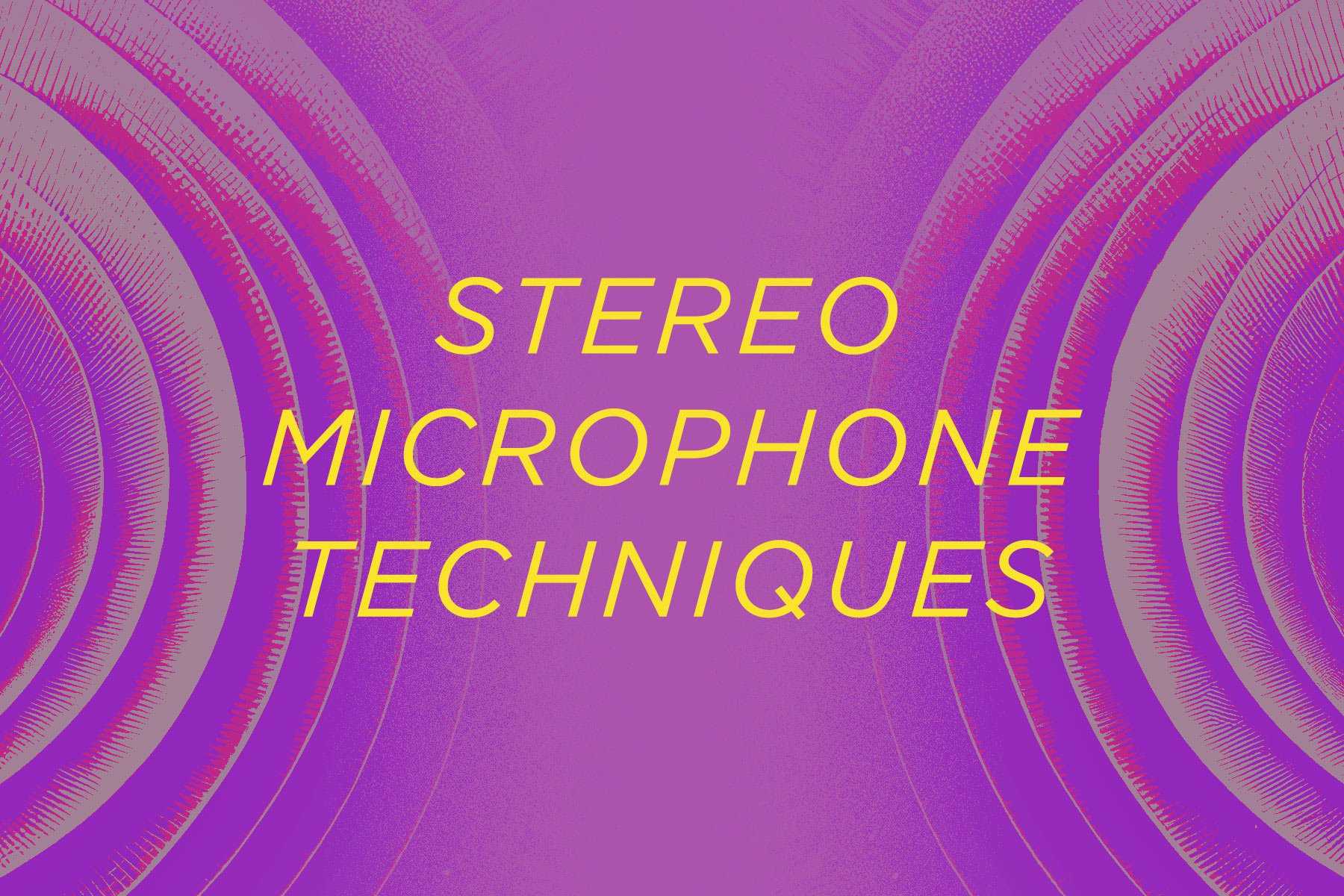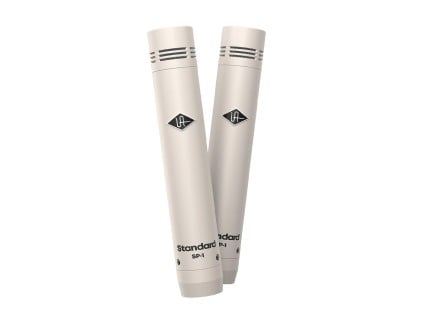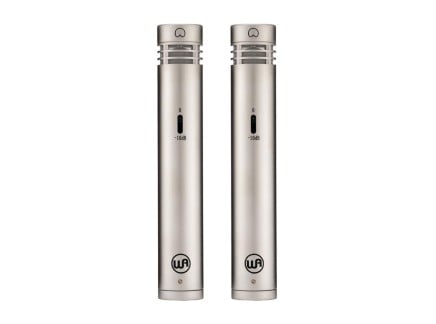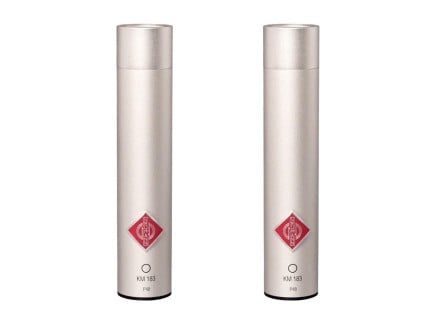Today we're taking a look at stereo microphone techniques—discussing some of the most common ways to capture a sense of space in your music.
While there are many creative microphone techniques in use, the vast majority will fall into the following categories; coincident, near coincident, spaced, and binaural recording. In coincident microphone arrays, multiple microphones' capsules are physically aligned with one another as closely as possible, with each at a different angle. In spaced arrays, microphones have physical space between them. As for the rest—we'll get into the details as we go along.
Many of the techniques in this article were researched and created just before 1930 (but some going back even farther) in the two main centers for recording engineering research of the time: Bell Laboratories in the US and EMI in the UK. Together these two camps created the basis for most of the microphone techniques all of which are still in use today.
Below are several of the most common mic techniques, with a few from several of the categories mentioned above. We'll also include some ideas about when and why you might choose each technique specifically when recording your music.
Stereo Microphone Techniques: XY
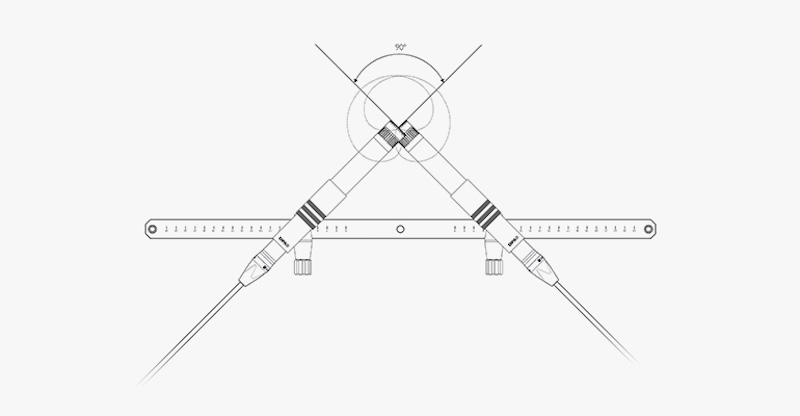
XY refers to a coincident pair which requires two cardioid microphones which are crossed, with their capsules stacked at an angle between 90–135º, with the axis of maximum response being 135º. An XY pair gives a good stereo image without the limitations for phase issues, and works a lot better for stereo image at close range than a spaced pair would.
This makes an XY pair excellent for recording piano, stringed instruments or any situation where the goal is to have a good capture of direct sound, well captured low end, and a more focused stereo image.
Stereo Microphone Techniques: AB
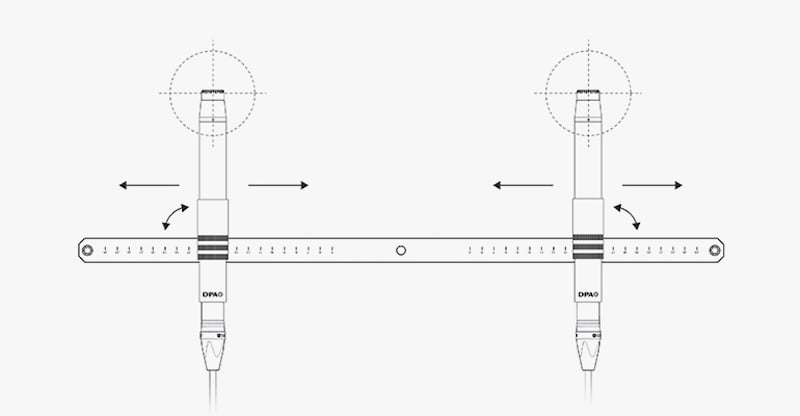
AB refers to a spaced pair, which usually consists of two omni or sometimes cardioid microphones about three to ten feet apart with the microphone capsules on the same plane. Mics are typically panned respectively.
This technique is best used to record ensembles like orchestras, or bands, and can have the potential to have a hole in the middle or a less focused middle. The sound tends to be unnaturally wide, which can some times be the desired effect: to reflect a sense of space, as the mic placement is wider than the human head/ears. This technique is not mono mix compatible.
Stereo Microphone Techniques: ORTF

ORTF (Office de Radiodiffusion Télévision Française, or sometimes referred to as French Broadcast), is a near-coincident microphone technique that uses two cardioid microphones. It was originally invented as an alternative to XY pairs in the 1960s by the French broadcasting company.
The mic placement is end to end (think "rear coincident") facing outwards at a 110º angle, with the capsules on the same plane at 17cm apart. This provides a realistic-sounding stereo image, is fairly mono compatible, and also has a focused center image. It is considered to be one of the closest mic techniques to how the human ears are placed, providing a very natural-sounding stereo image.
Stereo Microphone Techniques: Mid-Side (MS)
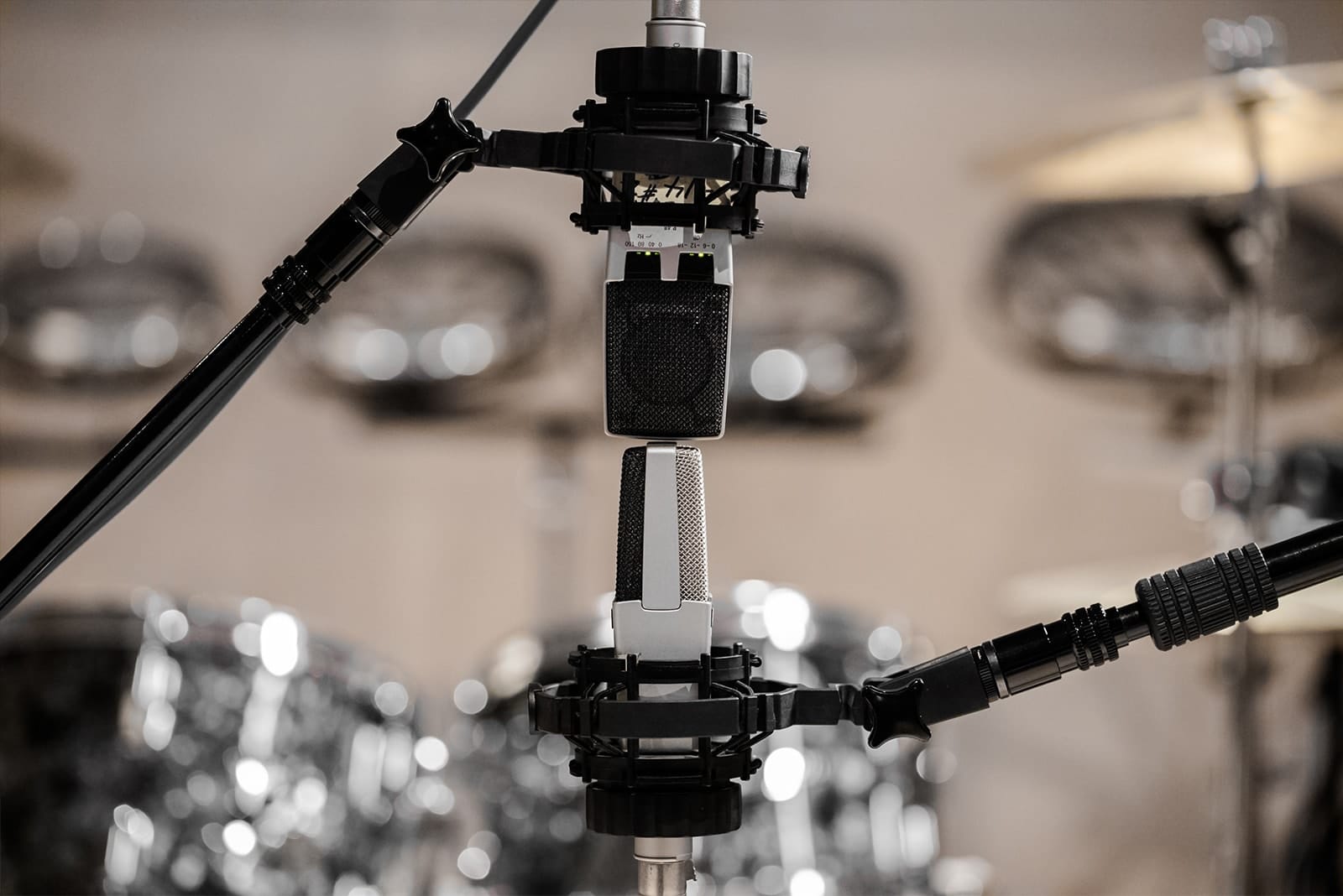
Patented in 1933 by Dr. Alan Blumlein, an early inventor and visionary in stereophonic and surround sound, this microphone technique requires one cardioid microphone and one bi-directional microphone. In application, the cardioid microphone is placed in a forward-pointing position (the mid position aimed at the source), while the bi-directional mic is offset by 90º just under the mid position mic. In this way, the side position mic capsule is pointing away from the source, capturing the ambient left and right. This technique creates a wide stereo image with a focused center, and is phase coherent and mono compatible.
This coincident technique is favored in both broadcast and studio applications, particularly for its mono compatibility, and is equally useful in live sound applications. It is less useful as an ambient mic technique and should not be too far from the source. It also requires a little bit of set up back at the console or daw making sure to set up 3 channels, pan the left right of the bi-directional mic, and phase invert one side. The spatial translation has great accuracy, positional translation, and flexible control for the mixing phase of recording.
Stereo Microphone Techniques: Blumlein
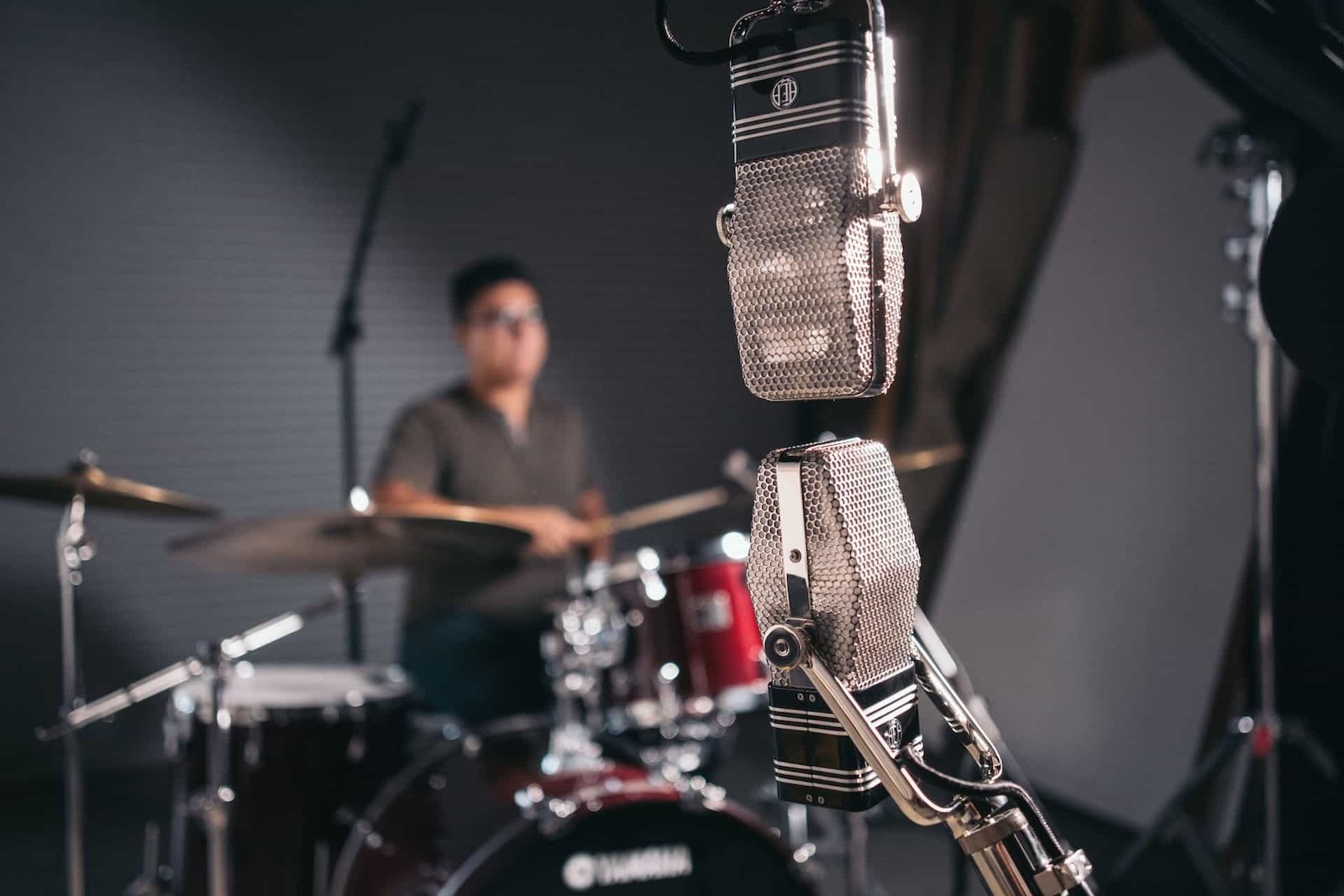
Clearly named after Dr. Alan Blumlein, this coincident pair uses two bi-directional microphones at a 90º angle relative to each other, with each mic panned left and right respectively. The capture is both wide and focused, with a minimization of ambient noise. The technique requires that the mic capsules are placed in close proximity at 90º angles relative to each other, and stacked on top of each other. In some instances, there are stereo bars that can be purchased to help set up the alignment.
This placement has excellent spatial translation and is very versatile in its uses. It can be wonderfully applied to things like drum kits, grand pianos, orchestral ensembles (for which it was primarily invented), and is also great for full band recordings. In the case of recording drums, an overhead positioning is great for capturing an accurate stereo field of the drum kit. It's advisable to use a matched pair of microphones when exploring this technique, as subtle differences in response can result in an undesirable stereo image.
Other Techniques to Know: Decca Tree
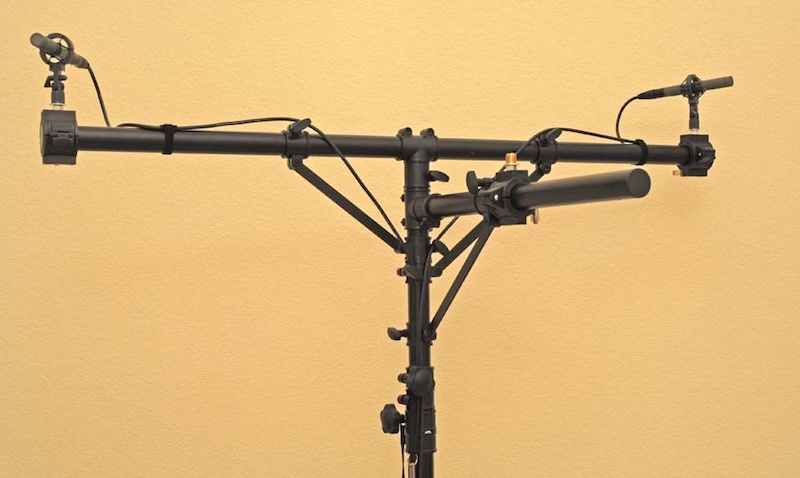
The Decca Tree arrangement is a spaced microphone technique, which was developed by Decca Records in the 1950’s and Roy Wallace, and is still very much in use today. This technique uses three microphones, which can be omni or cardioid, and has them set up in a triangular pattern, with the side mics generally two meters apart and the center mic being 1.5 meters from the side microphones. In some cases, you will even see a T pattern bar, but the Decca placement needs be fixed to one size, and can even be expanded upon using “outrigger microphones”: typically, two more mics added to the side positions.
Its best or most common uses have traditionally been with orchestras and symphonies, but it honestly works well with any ensemble, especially in a space with high ceilings, which could include rock bands, jazz ensembles and choirs. It can also be used as a room mic technique, but really only works well on larger rooms. In some cases Decca Trees may even be used in surround sound applications. With the center mic in position and both of the side mics panned to their desired width, there is a lot of flexibility in this technique.
Other Techniques to Know: Binaural Microphones
While not technically a placement technique, binaural microphones deserve their own mention. Binaural recording is not new, and while some of the advancements and uses are more modern, this type of approach to working with recording has been around since as early as 1881. The technology was first developed for use with the opera, and was used originally with carbon microphones.
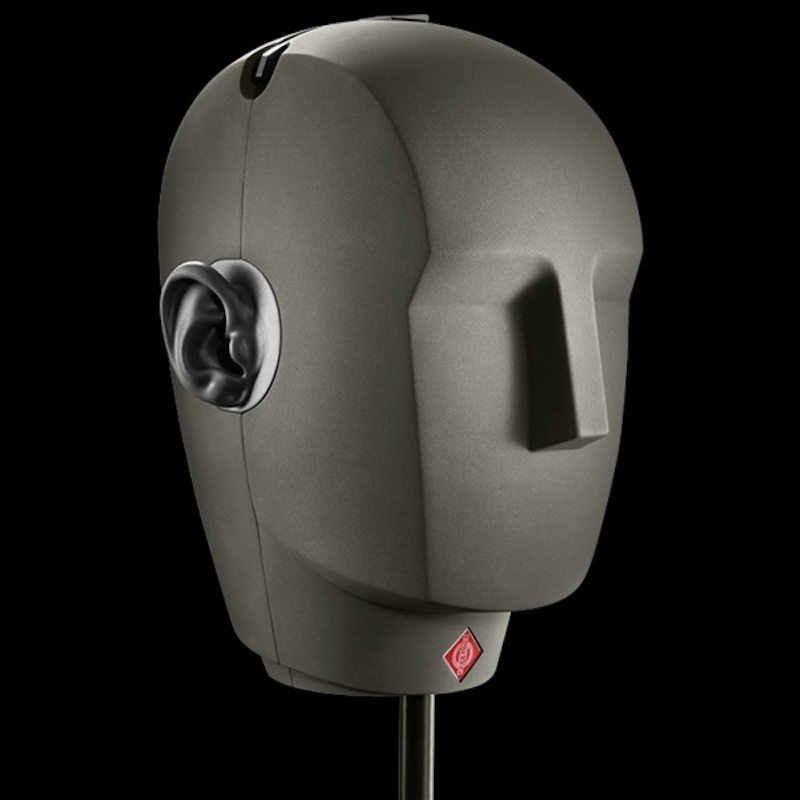 A Neumann KU 100 binaural microphone.
A Neumann KU 100 binaural microphone.
Binaural recording differs from stereophonic recording, and the use of dummy heads (which is why this technique was sometimes referred to as dummy) are still in use today. The dummy head, or synthetic head has microphone capsules placed inside of the ear canal. This method was often employed during the early days of cinema when sound was first brought to picture. This allowed for the capture of positional information required for film.
However, this technique stayed mostly in the background for years, as it wasn’t really applicable to recorded music and the recording industry, and would have required that listeners only experience the recordings with headphones, and so it was largely ignored outside of the film world.
Some binaural microphone examples are the Neumann KU 100 (used by the BBC and R&D) which is an actual dummy head with mics in the ears. There is also the 3Dio Free Space Binaural Mic, which comes in several varieties and specifications. This type of recording works best when the listener is either able to be surrounded by the correct speaker array, or is in use with headphones.
Conclusions
While there are many more types of microphone techniques, these are some of the most beloved and commonly used techniques. But, there’s no limit to the levels of experimentation that is possible—especially once you consider all the microphones on the market, along with all the differing transducer classes, and of course all the different spaces, and types of music and sound to be recorded.
Keeping some of these techniques in mind the next time you go to create a recording will have you both approaching your recording with more precision, but also hopefully with more creativity.
[Images throughout this article from DPA Microphones, Universal Audio, AEA Microphones, Neumann, Wikipedia.]

